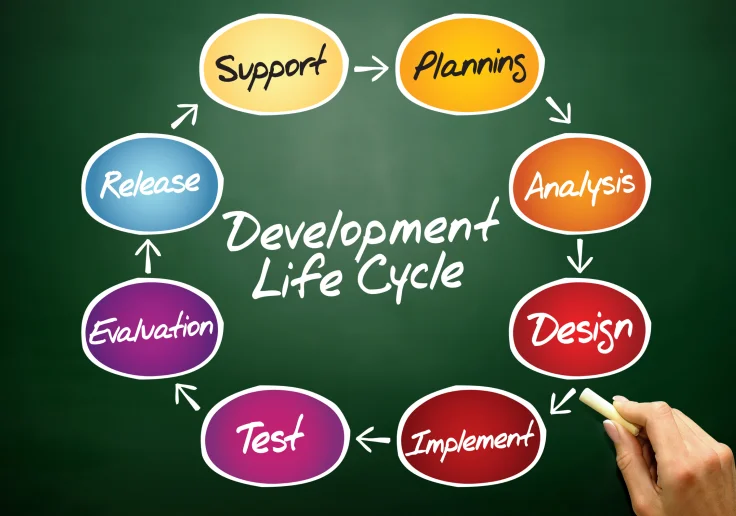Legacy methods typically accumulate data inconsistencies and inaccuracies over time. When migrating to SAP S/4HANA, addressing unclean grasp knowledge becomes a priority, as poor data quality can hinder the effectiveness of the brand new system. SAP R3 systems often endure important customization to align with distinctive enterprise processes.

As a outcome, you can shortly troubleshoot issues and cut back downtimes due to technical problems. You additionally get excessive visibility into your SAP system for better effectivity and security. Furthermore, 82% stated data administration points would gradual the adoption of AI technologies, whereas 73% expressed concerns about compliance. Legacy systems often store data in several codecs and buildings, making it difficult to seamlessly combine data into the standardized format required by SAP HANA. Understanding and addressing these variations is important for maintaining information integrity.
Being able to begin up/shut down coaching methods when wanted helps maintain cloud spend manageable. Avantra may also be built-in with Red Hat, allowing net new testing and training techniques to be closed at the click of a button, leading to constant training environments. The similar can be used for one off testing environments where massive scale adjustments could be tested in unique environments with out disruption to the QA techniques. They must bear enough training to make certain that they don’t seem to be overwhelmed by the brand new features of the SAP S/4HANA, causing lower productivity and poor efficiency. Thus, BPX may help you to successfully plan and execute the complete migration journey, guiding your business each step of the best way through the varied challenges that include it.
SAP has introduced its intention to finish help for its legacy ERP functions on the SAP NetWeaver platform by that time. As a part of its efforts to advertise the adoption of SAP HANA and SAP S/4 HANA, SAP may even discontinue help for other databases, together with Oracle, DB2, Microsoft SQL, and MaxDB. In fact, surveys have shown that 72% of businesses attributed improved efficiency as their most useful consequence of migration, with 61% noting larger consumer and business satisfaction. While many corporations are worried about how the migration course of may impede ongoing business, 33% of surveyed organizations were met with minimized downtime during that interval.
Volume And Velocity Of Knowledge
Customers who choose not to extend their upkeep help will be transitioned to a customer-specific upkeep model. Both options would lead to elevated costs for maintaining an outdated system. Time is of the essence, and with Oxford by your side, you can efficiently handle sources, ensuring timely, scalable, repeatable, and profitable results that guarantee a healthy return on funding (ROI). SAP S/4HANA presents intensive customization and the combination of critical third-party purposes to tailor the system to each company’s wants. Its adaptability is a key strength, permitting seamless integration with varied applied sciences inside an organization’s expertise stack.
UKISUG: Big majority of SAP users beset by data problems in migrating to S/4 Hana – ComputerWeekly.com
UKISUG: Big majority of SAP users beset by data problems in migrating to S/4 Hana.
Posted: Wed, 30 Mar 2022 07:00:00 GMT [source]
Collaboration with specialists skilled in S/4HANA can help firms successfully navigate the complexities of the migration process, ensuring a smoother transition and optimized outcomes. Without correct parallel administration of old and new ERP methods, businesses face vital risks, together with compatibility issues, operational downtime, and an absence of support for the legacy system. Upgrading from SAP ECC to S/4HANA is a gradual course of that may span months or even years to complete successfully.
There could be resistance to alter and inadequate person adoption which might pose threats to the successful implementation of migration. Migrating inaccurate or incomplete knowledge can impression decision-making, monetary reporting, and general business operations. Most companies are in awe of this new know-how however perceive that it is essential to move to this new know-how by 2025 if they want to keep ahead of their opponents.
Migrating To Sap S/4hana And Why A Linux Platform Is Integral To Success
SAP S/4HANA facilitates bringing multiple methods’ transactional and analytical abilities into one place, leading to better choice making, which could be value efficient in the long run. Those are the key findings from a survey carried out among 52 senior decision-makers at SAP consumer organisations within the UK and Ireland concerning the challenges of shifting to S/4HANA for knowledge management consultants Syniti. While SAP’s ECC application help deadline has been prolonged to 2027, businesses are suggested to leverage their systems to S/4HANA. As ECC ages, it becomes progressively challenging to integrate with modern SAP cloud-based infrastructure and software program. Notably, the reality that ECC is two-decade old can exacerbate this difficulty, making it less viable for businesses to continue relying on it. Engage key stakeholders, together with data homeowners, IT groups, and end-users, all through the migration journey.
The introduction of S/4HANA aims to simplify this landscape, however the journey towards simplification presents its own set of challenges. Effective communication with stakeholders is important to handle expectations and ensure a transparent transition process. They ought to emphasize the benefits of SAP in bettering effectivity and decision-making. Since SAP S/4 HANA continues to be within the growth stage, organizations could need to replace every so often which might pose challenges to organizations.

Clear communication and collaboration ensure that everyone seems to be aligned with the migration goals, fostering a smoother transition. These instruments streamline the migration process, providing options corresponding to automated mapping, knowledge validation, and error handling, contributing to a more environment friendly and dependable transition. In conclusion, migrating from SAP R3 to SAP S/4HANA is a multifaceted endeavor that demands meticulous planning, strategic decision-making, and a comprehensive understanding of the challenges involved. When migrating to SAP S/4 HANA, the scope typically extends beyond implementation, requiring additional analysis to handle information gaps and preserve earlier functionality. The first step is to engage with a most popular companion who can assist with conducting a readiness assessment and providing suggestions for business eventualities.
Systems, which would possibly be so old and dated, it’s virtually impossible to find educated useful resource who understand its capabilities. If you would possibly be lucky sufficient to search out some, they’d unlikely recognize it thanks to a lifetime of undocumented enhancements that have been added to sweat its tenure. SAP S/4HANA is a relational database that offers comparatively quicker access to knowledge than the old disk-optimized Relational Database Management System (RDBMS). As there’s a substantial difference in constructions, and so the migration from old to new expertise would possibly pose a challenge to some organizations. These vary from poor knowledge migration practices to system incompatibility and lack of coaching. In addition, training environments become critical throughout an enormous shift, similar to migrating to S/4 HANA.
Complete 10x Yoy Progress Methods For Enhancing State Performance In India: A Sector-by-sector Blueprint
It’s essential to note that updates will continue after transitioning to S/4HANA. This ongoing update cycle is part of SAP’s technique to maintain the software present, secure, and aligned with evolving business needs and expertise developments. Today, things are rapidly changing, and it’s important to have a system that can deal with advanced technologies, buyer expectations, hybrid workforces, and provide chain disruptions. When requested, a big majority have been both not very confident (34%) or considerably confident (54%) in regards to the quality and accessibility of their organisation’s information. A staggering 70% of those questioned mentioned they did not have the proper enterprise or data expertise to make effective use of all their data.
The firm used the Avantra platform’s server monitoring to maintain track of its SAP techniques. Avantra can help businesses overcome many of these challenges with SAP S/4HANA monitoring. With the Avantra platform’s native system monitoring, you can check your system’s performance with every day reviews. Furthermore, Avantra can guarantee all your audit control policies are in place and automatically effective upon migration, a pricey task that’s often missed. Avantra saves you 25% of the hours your SAP staff would in any other case have to spend on these checks.
Understanding The Info Migration Panorama
Transitioning this excessive degree of customization to SAP S/4HANA presents a challenge, as it might require extensive reconfiguration or redevelopment. Let’s discuss the technical, operational, and enterprise challenges organizations face while migrating to SAP S/4 HANA. Failure to manage these dependencies can result in compatibility points, efficiency bottlenecks, and potential downtime, emphasizing the need for meticulous planning and execution in the course of the implementation of S/4HANA. Changes or upgrades to one element of the stack can have ripple results on others.
- Conversely, the Greenfield strategy entails building a model new SAP S/4HANA occasion, which can present a fresh begin but calls for data migration and reconfiguration efforts.
- It permits the creation of revolutionary functions and offers next-generation hybrid transactional and analytical processing to help business intelligence.
- Using the Avantra platform’s dashboard, the company’s SAP team might get a minute by minute analysis of the system’s health 24/7.
- Moreover, inadequate knowledge and experience aren’t confined to the project’s length alone.
- As additionally stated, this should not result in excess prices if the proper enablement partner is selected.
- Agreeing upfront how this data must be dealt with is advised, to ensure data is neither duplicated nor made redundant if incorrect.
However, throughout this transition period, organizations must navigate the challenge of maintaining each legacy and new ERP techniques simultaneously. This requires guaranteeing that both platforms are updated and working effectively to keep away from disruptions in day-to-day operations. While short-term workarounds might provide temporary relief, they lack the real-time insights and flexibility required to thrive in today’s aggressive market. Growth accompanied by elevated complexity and information inconsistencies can impair business performance and diminish buyer satisfaction, posing challenges in person adoption. “With the increasing appetite from banks to drive down the worth of innovation and IT transformation by owning and executing migration tasks, we’re seeing a rise in the variety of projects which are delayed as a consequence. In most circumstances, that is attributable to a lack of understanding of the expertise into which it is being migrated and this throws up different challenges of maybe one other technology in which the group has more expertise.
Experience has shown us that project managers who understand this and put focus on the migration exercise, are much more likely to succeed and obtain their timelines within budget. In the dynamic realm of enterprise IT, the choice to decommission legacy SAP methods in favor of superior solutions like SAP HANA marks a strategic transfer in path of innovation and efficiency. However, this journey just isn’t without its set of challenges, particularly in phrases of the intricate course of of data migration. In this weblog, we delve into the complexities surrounding knowledge migration throughout SAP System Decommissioning and description key methods to beat these challenges, ensuring a clean and successful transition.
Conducting readiness assessments and performing pre-analysis of the source system are important for application configuration. Data migration and integration are arguably essentially the most crucial challenges when migrating to a new system. Regardless of how superior your business system is, every software product has a limited lifespan and will finally turn into outdated. Whether because of obsolete know-how, shifting enterprise developments, evolving wants, or application sap migration challenges adjustments, upgrading, or migrating your present enterprise software by transferring its essential options to new technology will be needed. Higher data volumes do not essentially improve the complexity of the task at hand however, it’s prone to require a most sturdy cleansing and mapping course of as a result of elevated chance of encountering poor high quality knowledge.
Since the SAP S/4HANA is a dynamic panorama, fixed change needs to be monitored to catch any discrepancies early. With the Avantra platform, you can also hold an eye fixed out for software program and audit based mostly modifications, supplying you with the ability to pre-empt performance problems and guarantee audit controls are properly in place. Moving to SAP S/4HANA might be a selection now, but it will soon turn out to be a necessity. In a couple of years, SAP will now not present assist for its ECC methods, so companies should start planning their SAP S/4HANA migration.
S/4HANA is the SAP’s latest technology of its enterprise useful resource planning software, which runs throughout cloud and on-premise datacentres. S/4’s innovation was to run the functions on SAP’s own HANA in-memory database, forsaking its previous reliance on Oracle databases. With SAP S/4HANA, companies can unlock the potential for optimizing operations, driving growth, and sustaining competitiveness in right now’s dynamic market. As per Statista’s projection, the worldwide ERP software market is ready to exceed $100 billion by 2025 [7], underscoring the necessity for businesses to embrace digital transformation. Leveraging the flexibleness and scalability of SAP S/4HANA, companies can make data-driven selections and foster collaboration among employees, enabling smoother workflows and enhanced productiveness. Conduct thorough testing of information integrity, system performance, and performance to establish and handle issues proactively.

With the growing number of banking purchasers set out to execute and handle SAP migration workouts in-house, we are often requested to advise on what issues the project groups are more likely to face. It is widespread for companies to battle with completely different data codecs, codes, and buildings. So, the necessity is to use knowledge mapping and transformation strategies that involve in-depth analysis of knowledge sources. Addressing this challenge wants a well-planned management strategy that features communication, training, and help.
For a profitable migration, businesses must develop a financial administration plan to maintain a decent rein on their budgets. Regarding code complexity, businesses should make the most of instruments corresponding to ABAP Test Cockpit, Code Inspector, and SAP Readiness Check to rectify code complexities and errors. Organizations must additionally present applicable training to their workers and perform testing steps before integrating S/4HANA. Finally, having up-to-date techniques in place is crucial to guarantee a seamless transition and capitalize on its benefits.

Read more about https://www.globalcloudteam.com/ here.